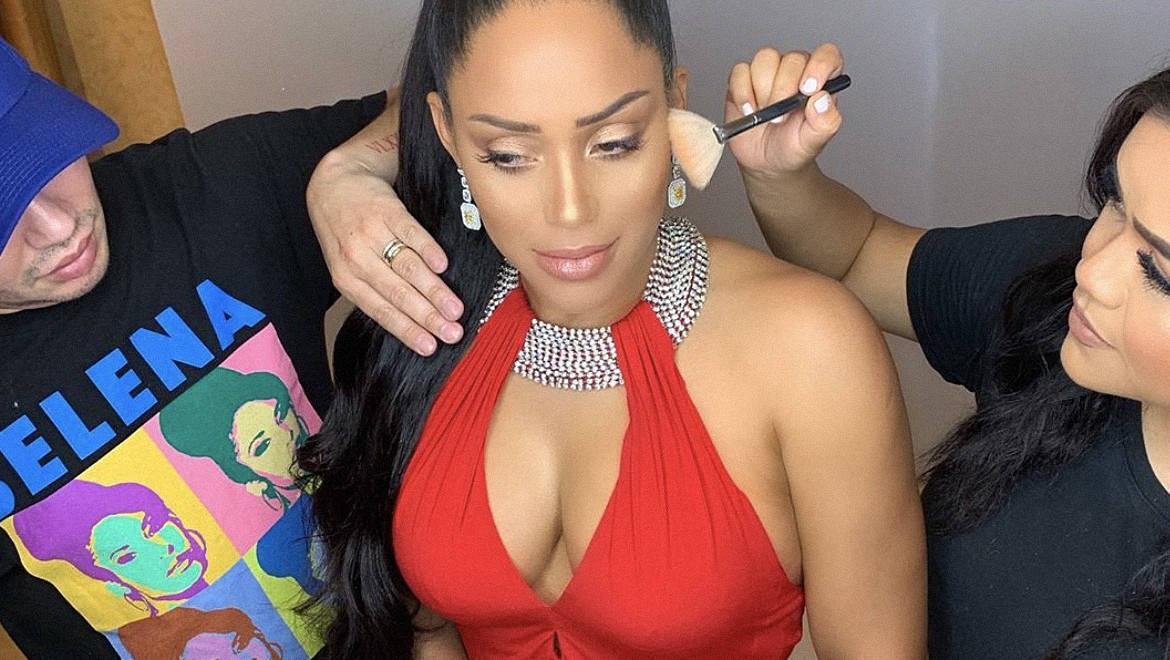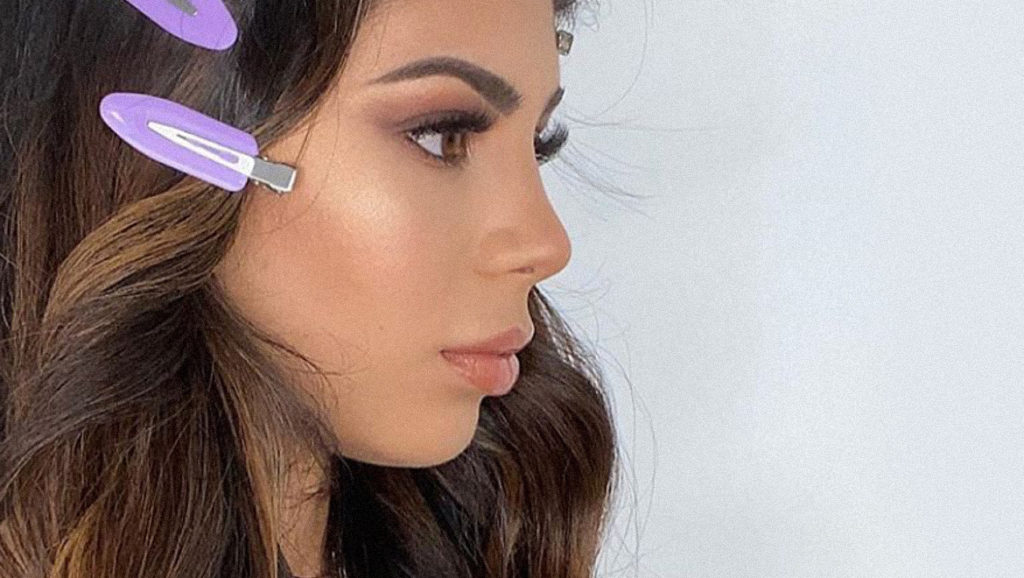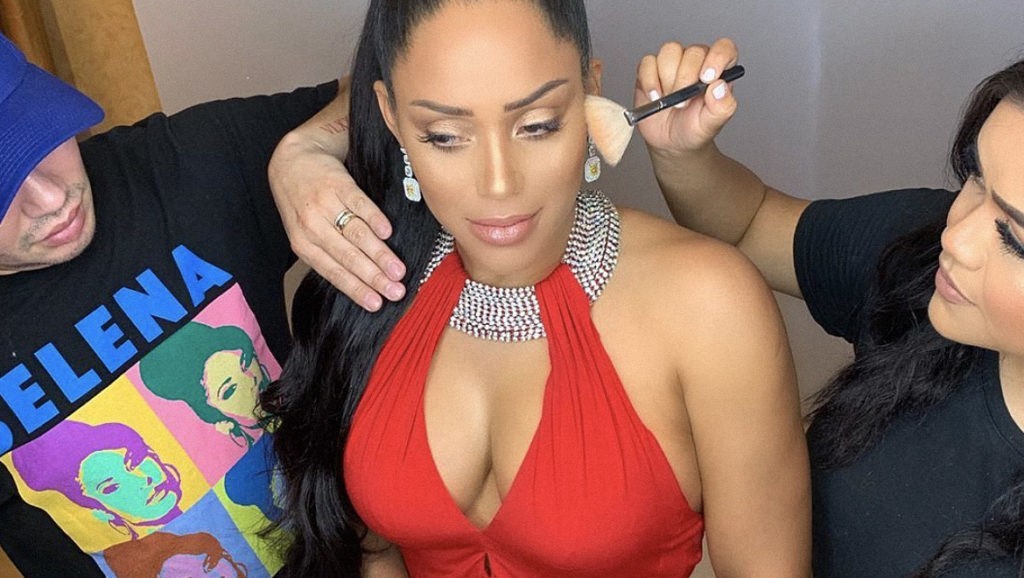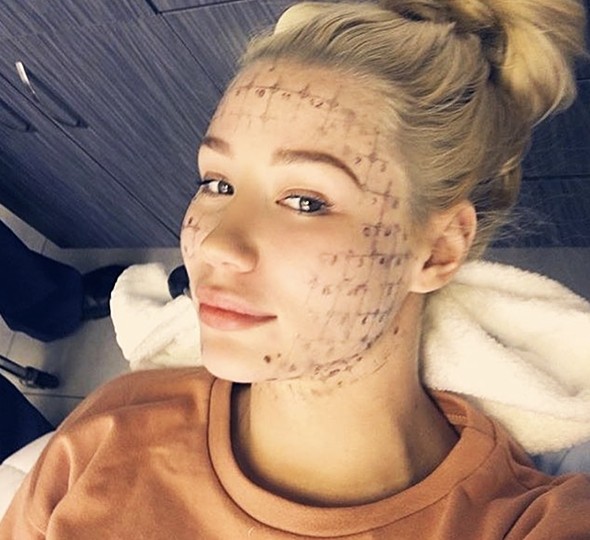Keep Them Guessing®
CLEFT LIP | NASAL DEFORMITY | BEVERLY HILLS
Components of the Short Nostril
Bahman Guyuron, M.D., Ashkan Ghavami, M.D., and Sarah M. Wishnek, B.A.
Cleveland, Ohio
Background: The short nostril, best visualized on the basilar view, is a multifaceted dysmorphology that requires evaluation beyond that of alar/columellar deformities. While the soft triangle is the key component in short nostrildisharmony, the alar rim and cartilaginous structures that border the nostrils play a salient role as well.
Methods: A retrospective review of 200 consecutive rhinoplasties (primary and secondary) examined the specific role of soft triangle excision and other components in the short nostril deformity. Twenty-seven patients underwent soft triangle excision with or without alteration of the other structures influential on nostril length. Of these 27 patients, only three patients required soft triangle excision alone.
Results: The distance from the nostril apex to the caudal border of the alar dome was found to be the crucial element in defining the treatment approach for creating nostril length. When this distance was long, excision of the soft triangle lining and approximation of the alar rim to the lining under the dome elevated the nostril apex and elongated the nostril. When the distance between the nostril apex and overlying dome was ideal or short, soft triangle lining removal was not required, and an optimal nostril length was established by repositioning the other components. Raising the dome using transdomal sutures redirected the wide domal arch vertically, narrowing and lengthening the nostril, provided there was no redundancy in the soft triangle. In a similar fashion, interdomal sutures improved both nostril length and inclination. Placement of a columellar strut also elongated the nostril. An alar rim graft, used primarily to correct alar rim retraction and concavity, also elongated the short nostril.
Conclusions: The most important factor in analysis and treatment of the short nostril is the extent of the soft triangle tissue present. Soft triangle lining removal is indicated when the distance from the nostril apex to the caudal dome is excessive. This allows the nostril apex to be pulled anteriorly, thus elongating the nostril. The short nostril often coexists with multiple other abnormalities of the nasal base and tip, mandating a comprehensive approach to address all the deformities encountered. Correction of alar retraction also effectively increases
nostril length. Further improvement of asymmetric tips and nostrils can be achieved through unilateral soft triangle lining excision with dome equalization through tip suturing and a subdomal graft.
(Plast. Reconstr. Surg. 116: 1517, 2005.)
Detailed anatomical analysis and treatment of nostril/lobule imbalance are crucial to a successful rhinoplasty. Correction of the short nostril can pose a unique challenge and warrants evaluation of the soft triangle in conjunction with that of alar-columellar deformities, as observed on the lateral view.1 On the other hand, all the components of the nasal base including the soft triangle, nostril shape, alar rim, and columella length and width are best assessed on the basilar view. The short nostril represents an imbalance between the nostril aperture and the nasal lobule, in which the nostril length is disproportionately undersized in relation to the lobule length. In studying the opposite abnormality, large nostril/small lobule disproportion, Daniel found the ideal nostril/tip ratio to be 55:45 on lateral view. Other studies define the aesthetic balance to include a lobule that is approximately 33 percent of the columellar length. Our observations of the basilar view have been similar to those of Daniel,3 and consist of a pleasing nostril/infratip lobule ratio of approximately 60:40 to 55:45. In addition, an aesthetically pleasing nasal base should fall within an equilateral triangle, while containing ovoid-shaped and symmetrical nostrils. Based on a study by Farkas et al., the aesthetically balanced nostril possesses an angle of inclination of approximately 50 to 60 degrees relative to a vertical line drawn through the nasal spine, columella, and tip7 (Fig. 1).
The short nostril abnormality often includes additional features that are epitomized by the cleft lip nasal deformity: short, round, malshaped nostrils with a narrow angle of inclination
and concomitant excess soft triangle tissue with flattened domes, an ill-defined nasal tip, and inadequate tip projection. The primary abnormality is seldom the result of a disproportionately large lobule. However, a large lobule with a normal size or short nostril can be seen in secondary rhinoplasty patients on whom the lobule and nasal tip have been augmented utilizing an onlay graft by the primary surgeon.
This article describes the specific role of alteration of the soft triangle, alar rim, and cartilaginous framework in correcting the short nostril and achieving a balanced nostril/lobule ratio. Proper management of the short nostril requires careful preoperative evaluation of all the components, in addition to continual intraoperative surveillance of the effect of manipulation of each of these components on nostril length, shape, and nostril/lobule relationships.
MATERIALS AND METHODS
Two hundred consecutive rhinoplasty procedures were reviewed to investigate the effects of soft triangle excision, along with alteration of the other nasal base components including the alar rim and cartilaginous structures, on the short nostril deformity. A comprehensive computer database of all procedures performed during each rhinoplasty case was examined. Patients who had soft triangle lining removal were selected, and their preoperative and postoperative photographs were analyzed. This group of patients was further divided into those who had soft triangle excision alone, and those who underwent excision of the soft triangle lining and additional procedures on the other structures surrounding the nostril having potential effects on nostril length. Preoperative and postoperative photographs were compared to assess the effects of excision of the softtriangle lining on nostril length and the nostril/ lobule harmony. The role of the soft triangle, alar rim, and the cartilaginous structures bordering the nostril was delineated through extensive intraoperative observation and postoperative evaluation. A comprehensive treatment approach was outlined, beginning with the evaluation and treatment of the soft triangle, and incorporating each of the above components.
THE SOFT TRIANGLE AND SHORT NOSTRIL
Procedures involving the soft triangle have traditionally been a source of controversy, prohibited by some and advocated by others. However, based on findings from this study, alteration of the soft triangle lining is of paramount significance in successful treatment of the short nostril deformity.
The soft triangle extends from the skin margin of the nostril apex to the overlying alar dome.
Converse defines the soft triangle as comprising two adjacent layers of skin, separated by loose areolar tissue. Natvig et al. describe the region of inferior alar rim skin as “the only place in humans” where skin abuts skin directly, without any intervening soft tissue.
A recent anatomical study by Ali-Salaam et al. further elucidates the complexity of the soft triangle region. Through histologic analysis of the soft triangle, the authors describe three distinct zones. Zone 1, underlying the apex of the dome of the lower lateral cartilage, contains fibers of the dilator naris muscle. More caudally, Zone 2 is composed of dermis. Zone 3 at the nostril rim contains interdigitating muscles that are extensions of the nasalis muscle or depressor nasi septi muscle within the dermal layers.
The distance from the nostril apex to the caudal border of the corresponding alar dome, as measured by the distance of the posterocaudal border of the dome to the alar rim, is the key determinant in planning the operative strategy. On patients with thin skin, the caudal border of the cartilage is readily visualized.
Otherwise, this anatomical point can be identified internally. When this distance is longer than 3 mm and the nostril is short, it is imperative to remove the soft triangle lining to allow elevation of the nostril apex through other modalities, such as tip suturing techniques (Fig. 2). This is a common finding, as the short nostril is often accompanied by excess soft triangle lining and coexists with other abnormalities, such as flattened, poorly-defined domes. An extreme manifestation of this constellation of abnormalities can be seen in the cleft lip nasal deformity, in which an anterior soft-tissue web that includes the soft triangle and other soft tissues dictates sufficient soft triangle lining resection, while malpositioned, severely flattened domes require repositioning and reshaping through cartilage suturing techniques and cartilage grafts.
Removal of the soft triangle lining can be accomplished through open or closed techniques with equal success. Although the soft triangle is evaluated at the onset of the operation, excision is undertaken as one of the final steps in the operative sequence. A crescentshaped piece of redundant soft triangle lining is removed with a pair of Iris scissors (Robbins Instruments, ) and the nostril rim is approximated to the lining under the domes with 6-0 plain catgut or chromic sutures (Figs. 3 and 4).
Any error in judgment should be on the conservative side, since additional lining can be readily re-excised while overresection may result in notching of the nostril. When the distance from the nostril apex to caudal boarder of the dome is optimal or short, the elongation of the nostril is accomplished by other means.
THE CARTILAGE FRAME
Modifications of the cartilaginous framework of the nasal base can effectively alter the shape and length of the nostril as long as the soft triangle lining is not superfluous. Under this condition, the short nostril often coexists with flat, divergent domes and an ill-defined, under-projected nasal tip. With the evolution of a multitude of suturing techniques, the cartilaginous components can be reshaped and the nostrils will lengthen simultaneously.
The transdomal sutures redistribute the wide domal arches vertically and elongate the nostril, provided that the distance from nostril apex to caudal dome is optimal (Fig. 5). In the presence of excess soft triangle lining, the change in the nostril length may not be discernible until the redundancy is eliminated.
Correction of a wide angle between the medial genu with interdomal or middle crural sutures can improve the inclination of the nostrils and increase nostril length minimally. These suturing techniques can also slightly increase tip projection and augment lobule volume if the soft triangle lining is excessive. Placement of interdomal and middle crura sutures may have to be followed by excision of the soft triangle lining to change the nostril length sufficiently.
In addition to increasing tip projection, placement of a columellar strut between the medial crura elongates the columella as long as the strut abuts the anterior nasal spine.26 This will also increase the nostril length (Fig. 6). Other columellar changes that affect nostril proportions involve the medial crura and footplates. Approximation of footplates (with resection of the lateral portion of the footplates, if indicated) controls the nostril angle and width, and establishes nostril symmetry while slightly increasing its length. Placement of a medial crura-septal suture at the antero-caudal septum further enhances the tip projection and elevates the nostril apex, thus elongating the nostril.
THE ALAR RIM
Alar concavity seen on the basilar view is frequently the result of alar retraction or notching. Techniques that correct alar retraction also lengthen the nostril, as the concave ala assume a more straight shape. Different methods are indicated depending on the severity of alar retraction present. Alar rim grafts, as popularized by Rohrich et al. are useful when the alar retraction is mild to moderate, while an internal V-Y advancement is required to effectively repair severe alar retraction.2 Alar rim grafts should also be inserted when numerous tip suturing methods are employed, since external valves become weak and the ala appear concave and retracted.
Further refinement of the nostrils can be accomplished by debulking excess alar soft tissue, which can elongate the nostril slightly. The approach can be either through an alar base incision30 or a rim incision.2 Comprehensive management of the short nostril and associated alar rim deformities complement the treatment of alar-columellar disharmonies as well.
RESULTS
Of 200 rhinoplasty cases reviewed, 27 patients required soft triangle excision. Of these patients, isolated excision of the soft triangle lining was performed in only 3 patients (11 percent). The remaining 24 patients (89 percent) underwent excision of the soft triangle lining combined with manipulation of the other nostril components, such as elongation of columella with a strut, alar rim grafts, medial crura approximation, and placement of transdomal sutures. Seventeen of 27 patients (63 percent) were secondary or tertiary rhinoplasty patients. The distance from the nostril apex to the overlying caudal border of the domes was found to be the key determinant in both evaluating and planning the surgical approach. No cases of notching in the region of the soft triangle were observed postoperatively. Three of 27 patients (11 percent) required a revision rhinoplasty unrelated to the alteration of the nostril length.
DISCUSSION
The most important factor in analysis and treatment of the short nostril is the extent of the soft triangle tissue present. Soft triangle lining removal is indicated when the distance from the nostril apex to the caudal dome is excessive. This allows the nostril apex to be pulled anteriorly, thus elongating the nostril.
The short nostril often coexists with multiple other abnormalities of the nasal base and tip, mandating a comprehensive approach to address all the deformities encountered. Correction of alar retraction also effectively increases nostril length. Further improvement of asymmetric tips and nostrils can be achieved through unilateral soft triangle lining excision with dome equalization through tip suturing and a subdomal graft.
There is a dearth of information germane to the short nostril and nostril/lobule disharmony.
As described by Fomon and Bell,32 and later reemphasized by Sheen,33 the lobule is “the portion of the nose ventral to an imaginary horizontal line across the apices of the nares” on the basilar view. The nostril may appear short as a result of the presence of a large lobule, although the absolute size of the nostril is indeed optimal. Farkas et al. described vast differences in nostril shape and inclinations among racial groups, with a more obtuse nostril inclination and a more oblique or horizontal orientation in the African-American and Asian nose.7 This information was used to formulate a nostril classification.
Based on this classification, “nasal tip protrusion” was observed to decrease as nostril inclination decreased (from Type I through Type VI).7 The cleft lip nose and African-American nostril/lobule characteristics exemplify the most severe variants of the short nostril deformity, requiring robust and comprehensive measures to improve nostril length and inclination, as well as to improve overall nasal aesthetics.
A large lobule is more often observed in secondary and tertiary cases, where the previous rhinoplasty resulted in an increase in lobule volume without proper identification and elimination of the excess soft triangle lining. A nostril may not appear short when associated with flattened, divergent domes and a lack of tip projection. However, as the improvements in tip projection and other abnormalities are achieved during the operative phase, the deficiency in nostril size becomes apparent. It is crucial to identify the potential for nostril disharmony and anticipate the nasal tip changes that may engender nostril/lobule disproportion.
Several authors have elaborated on management of the misshapen nostril in both aesthetic rhinoplasty and cleft lip nasal deformity reconstruction. Although a few authors have discussed the role of excision of the soft triangle lining in lengthening the nostril,10 –12,17 the complex interplays between the soft triangle lining and the other nasal base components and their role in nostril lengthening have not been explored. Excision of the soft triangle lining alone was utilized in reshaping the nostril in only 11 percent of our patients. The remaining 89 percent required a combination of maneuvers. Our study emphasizes that optimal treatment of the short nostril requires a thorough understanding of the role of all components: the soft triangle, alar rim, and cartilaginous framework buttressing the nostrils.
REFERENCES
1. Gunter, J. P., Rohrich, R. J., and Friedman, R. M. Classification
and correction of alar-columellar discrepancies
in rhinoplasty. Plast. Reconstr. Surg. 97: 643, 1996.
2. Guyuron, B. Alar rim deformities. Plast. Reconstr. Surg. 107: 856, 2001.
3. Daniel, R. K. Rhinoplasty: Large nostril/small tip disproportion.
Plast. Reconstr. Surg. 107: 1874, 2001.
4. Powell, N., and Humphreys, B. Proportions of the Aesthetic
Face. New York: Thieme, 1984. Pp. 28-31.
5. McCarthy, J. G., and Wood-Smith, D. Rhinoplasty. In J. G. McCarthy (Ed.), Plastic Surgery. Vol. 3. Philadelphia: W.B. Saunders, 1990. Pp. 1795-96.
6. Goldman, I. B. Rhinoplasty Manual. New York: Restricted Publication, 1968.
7. Farkas, L. G., Hreczko, T. A., and Deutsch, C. K. Objective assessment of nostril types: A morphometric
study. Ann. Plast. Surg. 11: 381, 1983.
8. Rohrich, R. J., Raniere, J., Jr., and Ha, R. Y. The alar contour graft: Correction and prevention of alar rim deformities in rhinoplasty. Plast. Reconstr. Surg. 109:
2495, 2002.
9. Sheen, J. H., and Sheen, A. Aesthetic Rhinoplasty, 2nd Ed., St. Louis: Mosby, 1987.
10. Coiffman, F. External incisions on the nose. Aesthetic Plast. Surg. 1: 363, 1978.
11. Planas, J., and Planas, J. Nostril and alar reshaping. Aesthetic Plast. Surg. 17: 139, 1993.
12. Ellenbogen, R., and Blome, D. W. Alar rim raising. Plast. Reconstr. Surg. 90: 28, 1992.
13. Flowers, R. S. The surgical correction of the non-Caucasian nose. Clinics in Plast. Surg. 4: 69, 1977.
14. Converse, J. M. The cartilaginous structure of the nose. Ann. Otol. Rhinol. Laryngol. 64: 220, 1955.
15. Natvig, P., Sether, L. A., and Dingman, R. O. Skin abuts skin at the alar margins of the nose. Ann. Plast. Surg.
2: 428, 1979.
16. Ali-Salaam, P., Kashgarian, M., and Persing, J. The soft triangle revisited. Plast. Reconstr. Surg. 110: 14, 2002.
17. Millard, D. R., Jr. Alar margin sculpting. Plast. Reconstr. Surg. 40: 337, 1967.
18. Crikelair, G. F., Ju, D. M. C., and Symonds, F. C. A method of alaplasty in lip nasal deformities. Plast.
Reconstr. Surg. 24: 588, 1959.
19. McIndoe, A., and Rees, T. D. Synchronous repair of
secondary deformities in cleft lip and nose. Plast. Reconstr. Surg. 24: 150, 1959.
20. Spira, M., Hardy, S. B., and Gerow, F. J. Correction of
nasal deformities accompanying unilateral cleft lip.
Cleft Palate J. 7: 112, 1970.
21. Tajima, S., and Maruyama, M. Reverse-U incision for secondary repair of cleft lip nose. Ann. Plast. Surg. 60: 256, 1977.
22. Behmand, R. A., Ghavami, A., and Guyuron, B. Nasal tip sutures part I: The evolution. Plast. Reconstr. Surg.
112: 1125, 2003.
23. Tebbetts, J. B. Shaping and positioning the nasal tip without structural disruption: A new, systematic approach. Plast. Reconstr. Surg. 94: 61, 1994.
24. Guyuron, B. Correction of intrinsic nasal tip asymmetries in primary rhinoplasty. (Discussion) Rohrich, R. J., and Griffin, J. R. Plast. Reconstr. Surg. 112: 1713, 2003.
25. Guyuron, B., and Behmand, R. A. Nasal tip sutures part II: The interplays. Plast. Reconstr. Surg. 112: 1130, 2003.
26. Dibbell, D. G. A cartilaginous columellar strut in cleft lip rhinoplasties. Br. J. Plast. Surg. 29: 247, 1976.
27. Guyuron, B. Dynamics of rhinoplasty. Plast. Reconstr. Surg. 88: 970, 1991.
28. Guyuron, B. Footplates of the medial crura. Plast. Reconstr. Surg. 101: 1359, 1998.
29. Rohrich, R. J., Raniere, J., Jr., and Ha, R. Y. The alar contour graft: Correction and prevention of alar rim deformities in rhinoplasty (Discussion). Plast. Reconstr.
Surg. 109: 2506, 2002.
30. Matarasso, A. Alar rim excision: A method of thinning bulky nostrils. Plast. Reconstr. Surg. 97: 828, 1996
31. Guyuron, B., Poggi, J. T., and Michelow, B. J. The subdomal graft. Plast. Reconstr. Surg. 113: 1037, 2004.
32. Fomon, S., and Bell, J. Rhinoplasty: New Concepts. Evaluation and Application. Springfield, Ill.: Charles C. Thomas, 1970.
33. Daniel, R. K. Rhinoplasty: Large nostril/small tip disproportion (Discussion). Plast. Reconstr. Surg. 107: 1882, 2001.
34. Rohrich, R. J., and Muzaffar, A. R. Rhinoplasty in the African-American patient. Plast. Reconstr. Surg. 111: 1322, 2003.
35. Joseph, J. Nasenplastik und Sonstige Gesichtsplastik nebst einen Anhang ueber Mammaplastik. Leipzig: Verlag von Curt Kabitzsch, 1931.
36. Weir, R. F. On restoring sunken noses without scarring the face. N.Y. Med. J. 56: 449, 1892.
37. Gillies, H. D., and Kilner, T. P. Harelip: Operations for the correction of secondary deformities. Lancet 2: 1369, 1932.
38. Gonzales-Ulloa, M. The fat nose. Aesthetic Plast. Surg. 8: 135, 1984.





















